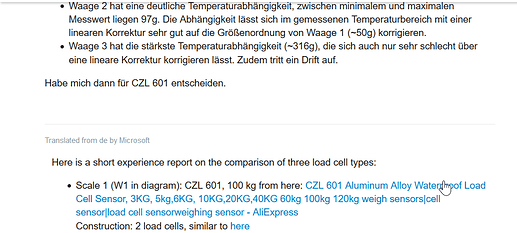Hello everyone 
I’m an employee of Maritex. And I’m the PM responsible for the load cells. To follow the topics on this forum, I registered to answer some questions and comments you add here.
Unfortunately, as you know, there are very big problems with the availability of electronic components all over the world. This problem also applies to load cells. MAVIN - of which we are a distributor, since this year produces only ordering products, has very small quantities available immediately from the warehouse.
That’s why we have problems with some models (mentioned by @clemens - model NA1-100kg). Load cells that are not very popular, MAVIN produces only under order and requires a large amount to start production. Therefore, we are having availability issues, for which I apologize. Please contact me on PM, if you are interested in any model, I will try to help.
We have a large beekeeping market in Poland, so bee scales are a popular projects. My experience and purchases of our clients show that they use different models: NA2-100kg, NA3-150kgml, NA4-200kg. Also NA151-60kg- 4 pcs. in one scale. NA151 have recently been very popular in our clients’ projects. If you have any questions, please let me know and I’ll try to help.
As compensation for accessibility problems, I can offer a -10% discount code for our online store. If anyone would like such a code, please contact me on PM - I’m not sure if it complies with the regulations, so I don’t want to paste it here. If admin agrees - I will add the code in this message  )
)
We also offer this manufacturer - SEMTECH.
there will be no problem with the availability of CZL601. I will add it to the store soon.
If you have any questions or comments, I’m at your disposal.

